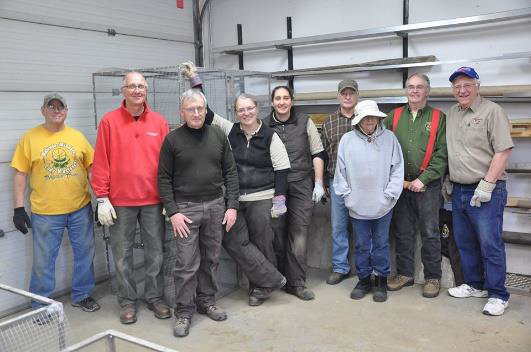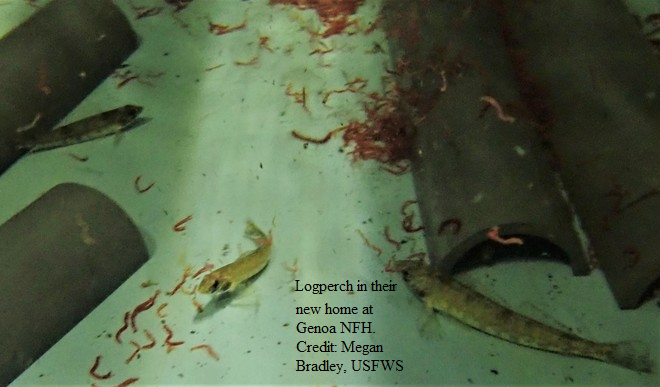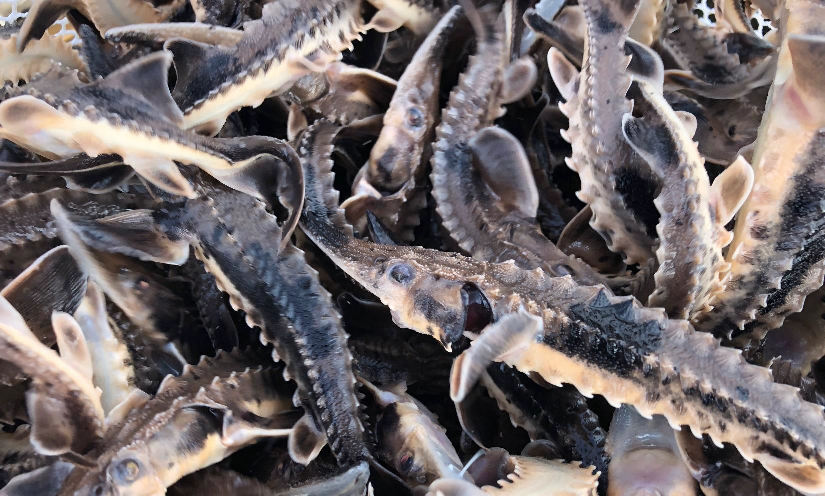
Every year the mussel program at Genoa places mussel cages in the waters of the Upper Mississippi River from the St. Croix River down to Dubuque, IA. Some of these cages will spend multiple summers in the river before they require repair, but the undeniable truth is that eventually the environment wins and the wire cages rust to the point they must be repaired. On February 26th,, March 4th and March 11th a total of 18 volunteers from the Friends of Pool 9 and Friends of the Upper Mississippi gathered in the shop at the hatchery to repair damaged mussel cages. A large pile of cages needed repair this year. Our first day was dedicated to preparing cage tops and bases for new wire and plywood. This meant that on days two and three the group quickly got to work riveting new wire onto empty cage top frames and plywood to bases. These volunteers have been repairing cages at Genoa NFH for over 10 years. When the dust had settled, over the 3 days, volunteers had stripped and repaired 34 tops and bases. For their efforts the volunteers were treated to a lunch of burgers and all the sides. A good time was had by all and the hatchery staff is very appreciative of all the many hours that were saved by this dedicated group of volunteers. Thank you! By Megan Bradley







